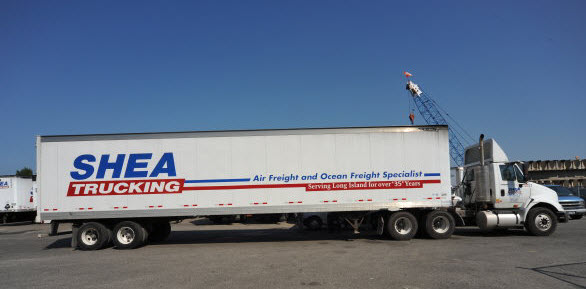Summary: In this guest post, we will explore the different drayage roles of shipping businesses, from trucking companies to intermodal rail providers. We will also discuss how having a reliable drayage partner is key for successful shipment of goods, as well as how to choose the right fit for your business’s needs. Read on for more information about this important aspect of global shipping.
Shipping is a critical part of the supply chain process, and it is essential to the success of any business. Shipping businesses play an important role in ensuring goods are delivered safely and on time. One of the most important roles shipping businesses fulfill is drayage. Drayage involves transporting cargo over short distances, often between ports and warehouses or factories. In this blog post, we will explore the drayage roles of shipping businesses in detail, explain how they help keep goods moving through supply chains and how they benefit both businesses and consumers alike.
When it comes to shipping goods, understanding the drayage roles of a shipping business can be critical. Drayage is the short-distance transportation of freight between a port and a warehouse or other storage facility. It is an essential part of the shipping process and requires careful coordination in order to ensure that all goods arrive safely and on time.
The Drayage Role of Shipping Businesses
- Drayage is the transportation of goods over land, usually short distances. Drayage businesses provide an important service to shippers by transporting goods from one location to another.
- Drayage businesses typically have a fleet of trucks and drivers that are available to transport goods on short notice. They also have the necessary permits and insurance to operate in various jurisdictions.
- Drayage businesses generally charge by the mile or hour, depending on the distance and time required to transport the goods. Shippers should be aware of these charges when selecting a drayage business.
- When selecting a drayage business, shippers should consider their reputation, experience, and price. Reputable drayage businesses will have a good track record of safely and timely transporting goods. Experience is also important, as drayage businesses that have been in operation for longer are likely to be more familiar with the challenges of drayage and how to overcome them.
- Price is also an important consideration when selecting a drayage business. While cheaper companies may be tempting, it is important to remember that you get what you pay for. Inexperienced or unprofessional drayage businesses may cut corners or take shortcuts that could jeopardize the safety of your shipment.
What is Drayage?
Deliveries is the transportation of goods over short distances, typically within the same city or region. It is a key service offered by shipping businesses, as it allows them to move goods quickly and efficiently from one location to another.
There are two main types of drayage: local drayage and long-haul drayage. Local drayage covers shorter distances, usually within the same city or metropolitan area. Long-haul drayage covers longer distances, often between different cities or states.
Shipping businesses typically offer both local and long-haul drayage services. They have a fleet of trucks that are specially equipped to handle different types of cargo, and they employ experienced drivers who know how to navigate the often congested roads and traffic conditions.
Drayage is an important part of the shipping industry, as it helps businesses move goods quickly and efficiently around the country.
The Process of Drayage
- The process of drayage is the transport of goods from one location to another by means of a dray, or a low-sided vehicle pulled by horses or oxen. Drayage businesses provide this service for both businesses and individuals.
- The first step in the process is to determine the customer’s needs. This includes understanding the type of goods being transported, the distance to be travel, and any special requirements that must be met. Once these needs are understood, the drayage business can develop a plan for transport.
- Next, the drayage business will secure the necessary equipment and resources. This may include hiring additional staff, if needed. The company will also make sure that the route to be taken is clear and safe.
- Finally, the drayage business will execute the plan, transporting the goods as agreed upon with the customer. Upon completion, the company will invoice the customer for their services.
The Different Types of Drayage
Drayage is the process of moving goods from one place to another, typically over a short distance. Drayage businesses provide this service for a variety of clients, including manufacturers, retailers, and other businesses. There are a few different types of drayage businesses:
-Local drayage: This type of business focuses on moving goods within a single city or metropolitan area. They typically have a smaller fleet of trucks and drivers and may only operate during daytime hours.
-Regional drayage: These businesses move goods between cities or states that are close to each other. They usually have a larger fleet of trucks and drivers and can operate 24 hours a day.
-Long-haul drayage: As the name suggests, this type of business moves goods over long distances, often across state or country borders. They usually have an even larger fleet of trucks and drivers and can operate around the clock.
The Benefits of Drayage
As a shipper, you may be wondering what drayage is and why it’s important to the shipping process. Drayage is the transportation of goods from one location to another, typically over a short distance. This can be done via truck, rail, or water. Drayage is an important part of the shipping process because it helps to move goods quickly and efficiently from one place to another.
There are many benefits of drayage, including:
- Drayage can help to speed up the shipping process.
- Drayage can help to reduce shipping costs.
- Drayage can help to improve shipping efficiency.
- Drayage can help to reduce traffic congestion.
- Drayage can help to improve air quality.
The Drawbacks of Drayage
Drayage is the transport of goods by truck over short distances, typically within the same city or metropolitan area. Drayage is a critical link in the supply chain, but it can be a challenge for shipping businesses due to its inherent unpredictability.
One of the biggest challenges with drayage is that it is often difficult to predict when and where shipments will arrive. This can make it difficult to plan for capacity and personnel needs. Additionally, drayage can be impacted by weather and traffic conditions, which can further add to the unpredictability.
Another challenge with drayage is that it is often one of the most expensive elements in the supply chain due to the high cost of fuel and labor. This can make it difficult for shipping businesses to compete on price. Additionally, many drayage providers do not have access to discounts or other cost-saving programs that could help offset these costs.
The unpredictability and high cost of drayage can lead to delays in shipments and frustration for customers. Shipping businesses need to be aware of these challenges and take steps to mitigate them as much as possible.
Conclusion
Drayage is a vital role that shipping businesses must undertake. Shipping companies not only need to ensure their own vehicles are capable of transporting the goods, they also need to be aware of any local regulations or restrictions affecting their operations in order to provide an effective service for their customers. With this knowledge, you should now have a better understanding of drayage roles and how it can help your business succeed in its shipping needs.





